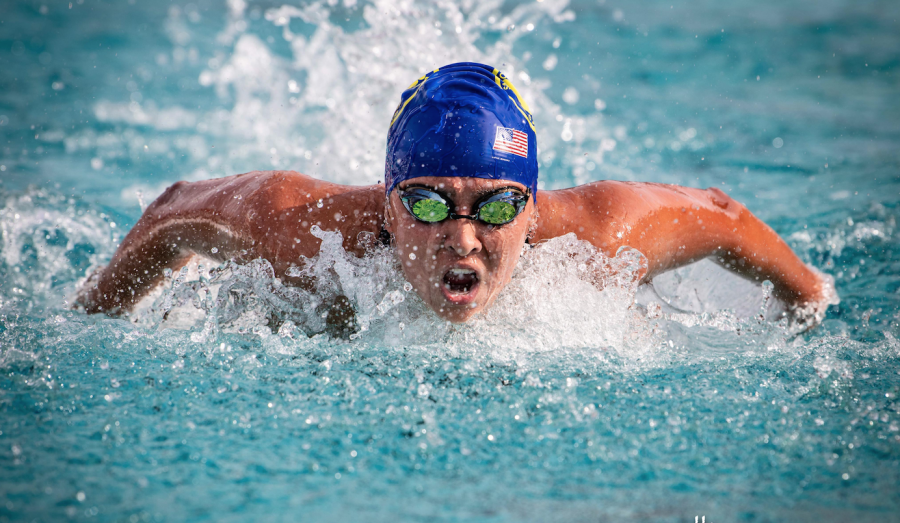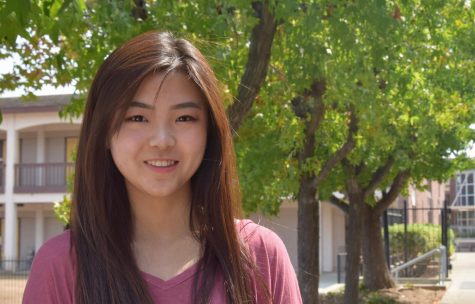From Matador to Recruit
Sports serve as an alternative avenue to get into college
September 28, 2018
As the college application season is now upon the class of 2019, many hopeful students wonder if they’ve satisfied the admissions offices of their favorite schools. Though her classmates are scrambling to perfect applications through the thick of college application season, Ligier is not. For her, getting recruited by college teams is on the top of her priority list and serves as her path into college.
At the age of 12, senior Leslie Ligier started playing competitive tennis, crediting her ability to succeed now to the work she put in when she was younger. Later, however, around the age of 15, she began to consider the possibility of playing tennis in college. The idea didn’t excite her at first. In fact, she almost felt pressured.
But Ligier’s mindset shifted, and she found ways to combat the stress of becoming a college athlete.
“Working out a lot more and exercising really helped relieve my stress,” Ligier said. “Then after all that work, I started consulting coaches, and that’s where I am today.”
Ligier is currently working to get recruited by a Division I or Division III school. For tennis, the process begins sophomore year, unlike some other sports which start later. Players can contact coaches, but coaches don’t contact players until their junior year. According to Ligier, the earlier stages of the process involves making a name for yourself. Later on, recruiters come to watch matches. Ligier has played in the Donovan Showcase in both Philadelphia and Southern California in December 2017 and July 2018, respectively. There, she was able to meet and connect with coaches from several universities.
“After that, you really start to create a bond with the coaches, and you start to feel which ones you kind of connect with more,” Ligier said.
As for what kind of college environment Ligier is looking for, she has visited various colleges and contacted the coaches there. After visiting schools like Swarthmore College, a small, private liberal arts school, to schools like UC Irvine, a big, public research university, Ligier has decided she wants something in between.
“I realized that somewhere in the middle would be the best for me and I’m looking for colleges that have like resources that can help me as well,” Ligier said. “Like students who are not only competitive, but are also willing to work hard and make you better too.”
For other sports such as swimming, the college recruitment process begins junior year. As a varsity swimmer since her freshman year, junior Bianca Yongyuth has also been looking to get recruited. From a young age, Yongyuth swam competitively. She admits that when she was little, the incentive to win came along with the prizes, such as ribbons or cookies. But soon the discussion of blue ribbons versus red ended, and she started to hear coaches and parents talk about the potential of playing sports in college. She then started her path to getting recruited.
Though she took a brief interest in Division III schools, Yongyuth concludes that she hopes to swim for Division I schools among the coasts. Due to changes in the swimming recruiting policy as of April 2018, Yongyuth can start flying out to colleges for visits now as a junior. These visits involve staying with players, meeting the team and touring campuses.
“I talked to a [Division III] coach at UChicago, and I was really interested in that college, but then I realized I’d rather swim for [Division I],” Yongyuth said. “I also think I would really like to stay around any coast, California or Texas, or the East Coast … I would really like to be around water.”
In order to get players like Ligier or Yongyuth recruited, college coaches often communicate with the coach of the high school team.
“More often than not, a college coach will have a discussion with me about a player and I’ll be asked to write letter of recommendations or support the player during the admission process,” boys varsity volleyball head coach Paul Chiu said. “And since I know some of the college coaches, sometimes I’ll have discussions with them and approach them to potentially promote the Monta Vista kids or have an in-depth discussion with them about the kids.”
Chiu is coming up on his ninth year of coaching the team. Over these years, four former MVHS players, including Chiu’s son, have been recruited by colleges.
Chiu’s approach to helping his athletes with the recruitment process goes in steps.
“My first job is making sure the athlete is matched up, and I try to help them match up with what they want to study and where they want to go to school and I make sure that they have that identified first,” Chiu said.
The team has all their games recorded, letting players create their own highlight reels to send to colleges, which is informative to college coaches when looking for players for a specific position on their team. But Chiu admits that skill is only part of getting recruited.
“They want good character kids, so skill [is important], and then for schools such as NYU, you need the brains so that you’re academically eligible as well and they want kids who are comfortable and who will work hard,” Chiu said. “They care about character quite a bit.”
Some colleges make a few exceptions if students have extreme skill that allow them to overlook character, but ultimately, they look for students who can be good teammates and have the right mindset and attitude. Therefore, when Chiu is asked to recommend student athletes, he is asked to discuss the character of the student more than the student’s athletic skills.
Chiu also describes the difference between different divisions. Schools like NYU and MIT allow for more balance between being a student and an athlete, whereas other schools value the sport over academics, according to Chiu.
“If you play division 1 college sports, it’s a job. The time requirement is year-round, there’s a lot more mandatory activities,” Chiu said. “Depending on the nature of the school, they will value the sport over academics.”
As for a student outlook on playing college sports, Yongyuth has an enthusiastic approach because of what college athletes have told her.
“They say the atmosphere is really amazing because everyone’s a team player and they’re really invested in each other,” Yongyuth said. “I know that the commitment is more [than high school], even during the season you also have to train outside with those people, but even though it’s so much commitment I do like how invested everyone is in each other.”
For tennis specifically, Ligier looks forward to the team atmosphere of the sport as it is something that is absent in the high school experience.
“I think I’m most excited for the team aspect of college tennis,” Ligier said. “Tennis is such an individual sport that it would be really amazing to surround myself with people who are super supportive of each other and push each other to be better rather than be surrounded by people trying to


















